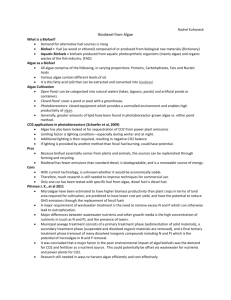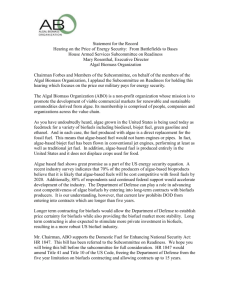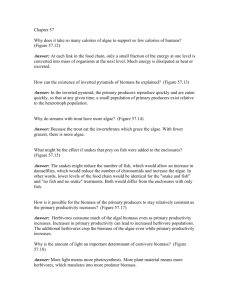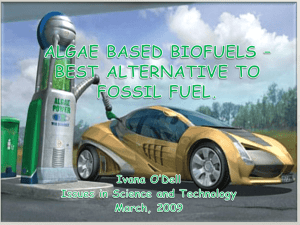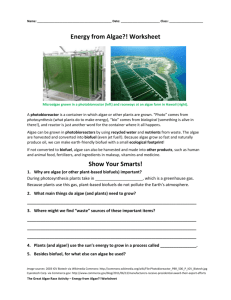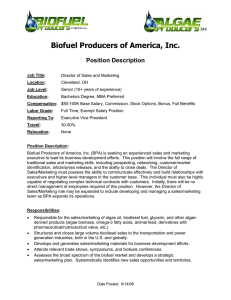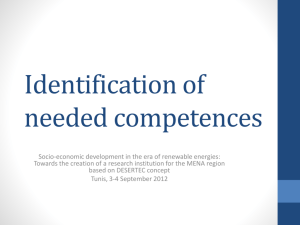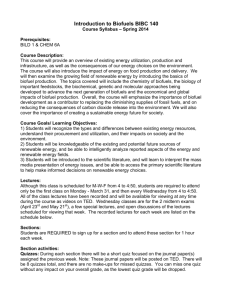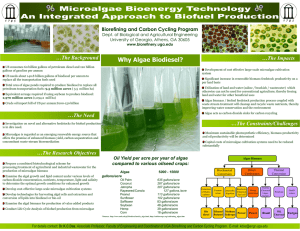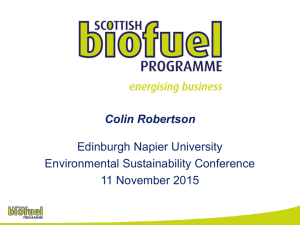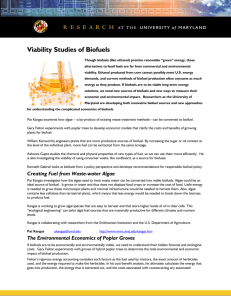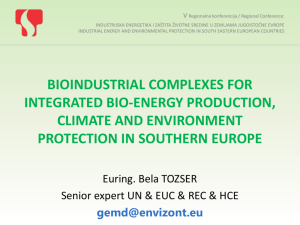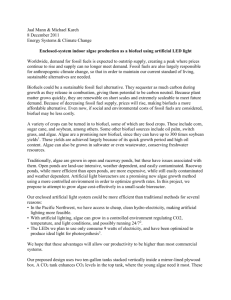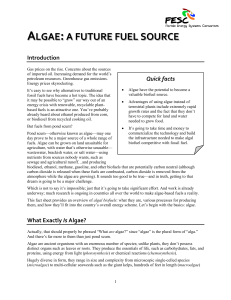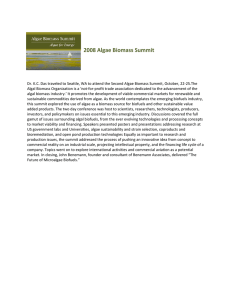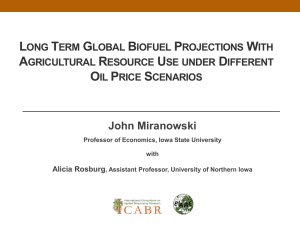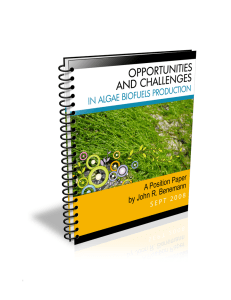MAKING BIOFUEL FROM MICROALGAE
advertisement
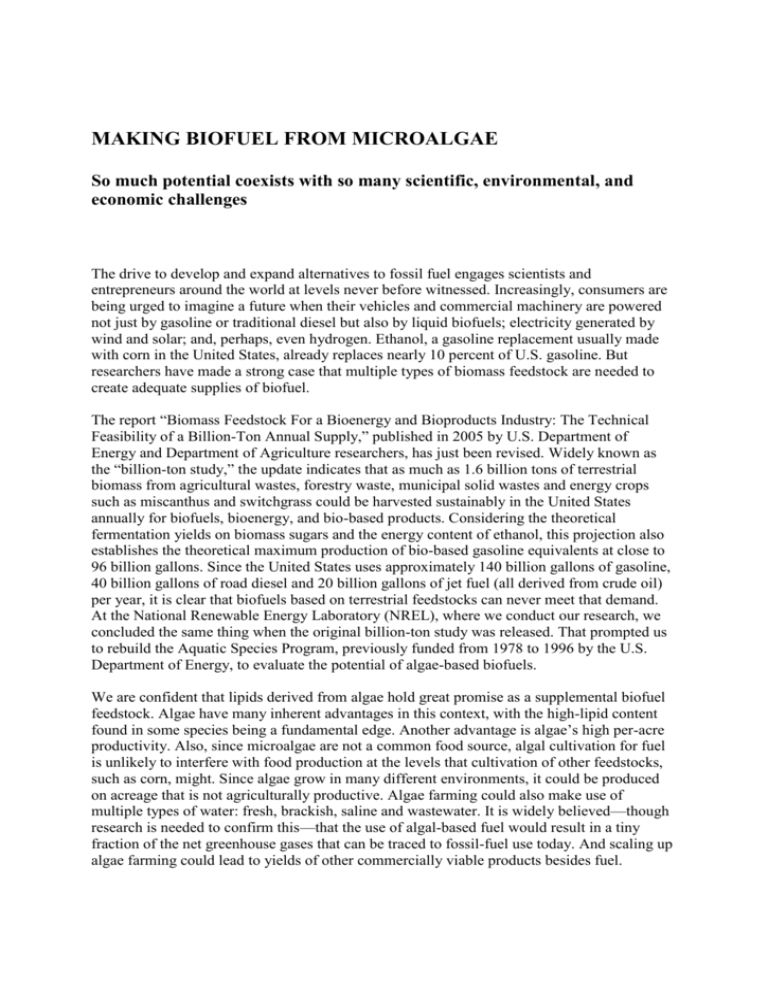
MAKING BIOFUEL FROM MICROALGAE So much potential coexists with so many scientific, environmental, and economic challenges The drive to develop and expand alternatives to fossil fuel engages scientists and entrepreneurs around the world at levels never before witnessed. Increasingly, consumers are being urged to imagine a future when their vehicles and commercial machinery are powered not just by gasoline or traditional diesel but also by liquid biofuels; electricity generated by wind and solar; and, perhaps, even hydrogen. Ethanol, a gasoline replacement usually made with corn in the United States, already replaces nearly 10 percent of U.S. gasoline. But researchers have made a strong case that multiple types of biomass feedstock are needed to create adequate supplies of biofuel. The report “Biomass Feedstock For a Bioenergy and Bioproducts Industry: The Technical Feasibility of a Billion-Ton Annual Supply,” published in 2005 by U.S. Department of Energy and Department of Agriculture researchers, has just been revised. Widely known as the “billion-ton study,” the update indicates that as much as 1.6 billion tons of terrestrial biomass from agricultural wastes, forestry waste, municipal solid wastes and energy crops such as miscanthus and switchgrass could be harvested sustainably in the United States annually for biofuels, bioenergy, and bio-based products. Considering the theoretical fermentation yields on biomass sugars and the energy content of ethanol, this projection also establishes the theoretical maximum production of bio-based gasoline equivalents at close to 96 billion gallons. Since the United States uses approximately 140 billion gallons of gasoline, 40 billion gallons of road diesel and 20 billion gallons of jet fuel (all derived from crude oil) per year, it is clear that biofuels based on terrestrial feedstocks can never meet that demand. At the National Renewable Energy Laboratory (NREL), where we conduct our research, we concluded the same thing when the original billion-ton study was released. That prompted us to rebuild the Aquatic Species Program, previously funded from 1978 to 1996 by the U.S. Department of Energy, to evaluate the potential of algae-based biofuels. We are confident that lipids derived from algae hold great promise as a supplemental biofuel feedstock. Algae have many inherent advantages in this context, with the high-lipid content found in some species being a fundamental edge. Another advantage is algae’s high per-acre productivity. Also, since microalgae are not a common food source, algal cultivation for fuel is unlikely to interfere with food production at the levels that cultivation of other feedstocks, such as corn, might. Since algae grow in many different environments, it could be produced on acreage that is not agriculturally productive. Algae farming could also make use of multiple types of water: fresh, brackish, saline and wastewater. It is widely believed—though research is needed to confirm this—that the use of algal-based fuel would result in a tiny fraction of the net greenhouse gases that can be traced to fossil-fuel use today. And scaling up algae farming could lead to yields of other commercially viable products besides fuel. All this promise is conditional, of course. Many scientific, environmental, and economic hurdles stand between today and a time when the world’s population is reaping benefits from algae-produced fuel. Highly productivity algal strains must be identified. New and reliable algae-farming methods must be developed. A means must be found to farm algae with the limited amount of water that is available for the job. Hyper-efficient systems for extracting lipids and any other commercial products grown in algae must be invented too. If all that can be accomplished, there is still one potential deal breaker. All of this must be done at a cost that makes algae-derived biofuel competitive with petroleum-based fuels. Research at NREL is attempting to address some of these challenges. Phillip T. Pienkos, Lieve Laurens, Andy Aden American Scientist 2011

